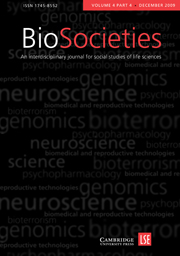Article contents
Secularism, Sanctity and the Wrongness of Killing
Published online by Cambridge University Press: 01 June 2008
Abstract
This article challenges the idea that there could be a convincing secular version of the principle that human life is sacred, and explores the significance this has for the law. A number of secular justifications for the claim that there is something intrinsically, as opposed to instrumentally, valuable about human life have been mooted, most eloquently by Ronald Dworkin. While secular explanations for the sanctity of human life are undeniably attractive, this article will maintain that they do not have logic on their side. Having argued that the ‘sanctity principle’ makes sense only as an article of religious faith, the implications this has for the law are explored. In relation to end-of-life decision-making, the sanctity principle has been invoked to justify a sharp line between deliberately ending life and failing to prolong it. This article will conclude by arguing that a rejection of the sanctity principle might, in certain circumstances, cause us to focus instead on the extent to which death harms someone.
- Type
- Articles
- Information
- Copyright
- Copyright © London School of Economics and Political Science 2008
References
- 2
- Cited by


